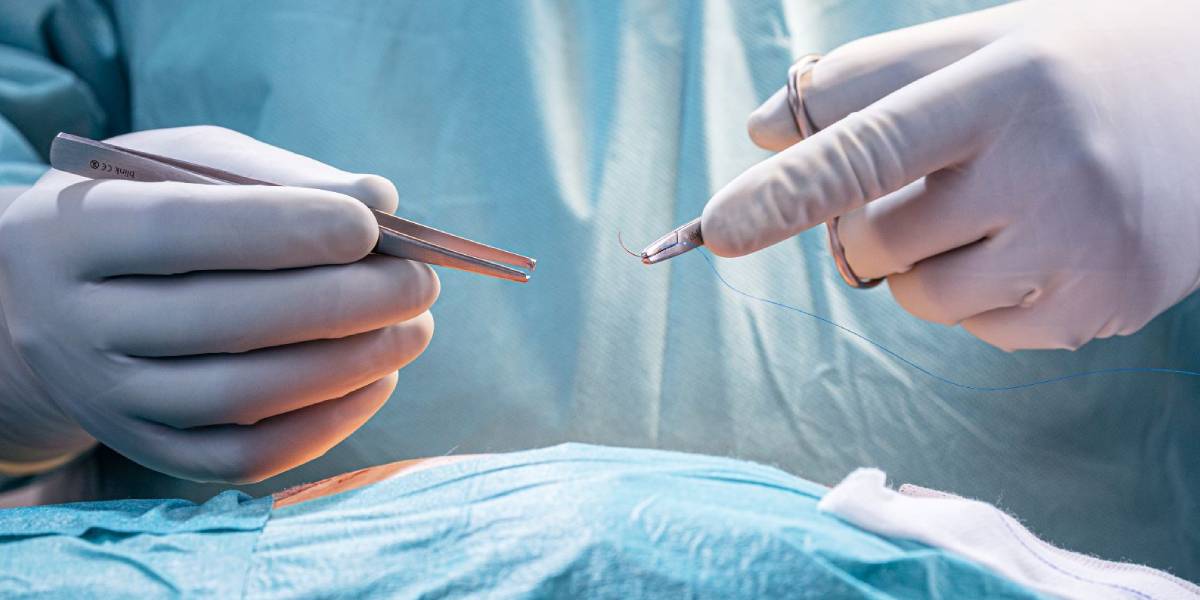The National Family Health Survey-5 found a substantial variation among states — as low as 5.2% in Nagaland to as high as 60.7% in Telangana.

(Representational image/Creative Commons)
A study conducted at a hospital in Telangana found that young and obese women were at a higher risk of contracting surgical site infections (SSI) after Caesarean sections.
The study also revealed that SSIs after Caesarean deliveries were low if subjected to single-dose antibiotic prophylaxis (preventive measures).
Researchers from the MediCiti Institute of Medical Sciences and Indian Institute of Public Health, both in Hyderabad, conducted the study, Prospective Cohort Study of Surgical Site Infections Following Single-dose Antibiotic Prophylaxis in Caesarean Section at a Tertiary Care Teaching Hospital in Medchal, India.
Caesarean section (CS) is considered to be a life-saving operative intervention for women and newborns in certain antepartum and intrapartum conditions. Caesarean delivery may be accompanied by several complications, including SSIs.
However, there is a significant lack of uniformity in the administration of antibiotics for preventing SSIs.
The study was conducted to determine the incidence of post-CS SSIs following the administration of single-dose antibiotic prophylaxis as recommended by the WHO. It also tried to identify the SSI risk factors and reported the bacteriological profiles and the antimicrobial susceptibility pattern of the culture-positive isolates.
According to the WHO, the CS rate between 10 and 15 percent has to be considered optimum at the population level. Globally, the reported rate of CS was 21.1 percent and it varied between 4.1 percent in West and Central Africa and 44.3 percent in Latin America and the Caribbean region, with an annual increase of 4 percent.
In India, the overall CS rate increased from 8.5 percent to 21.5 percent in the past 15 years. The National Family Health Survey-5 (NFHS-5) found a substantial variation between the states — from as low as 5.2 percent in Nagaland to as high as 60.7 percent in Telangana.
SSIs increase the morbidity and mortality of mothers and babies, besides extending the duration of hospital stay and thereby hiking the cost of medical care.
To prevent SSI, the WHO recommended using a single-dose antibiotic, mostly the first-generation cephalosporins for penicillin, before 30 minutes of incision for all undergoing CS.
According to reports, the incidence of post-CS SSI worldwide was between 0.63 percent and 9.85 percent. whereas in India, it ranged from 3.1 percent to 24.2 percent. However, there was a significant lack of uniformity in the administration of antibiotics for preventing surgical site infections (SSI) following Caesarean deliveries.
The hospital-based study was conducted between June 2017 and December 2019, in which women who underwent Caesarean sections were followed up for 30 days. Clinical details were collected using a structured questionnaire, and participants were followed up weekly after discharge to document any signs or symptoms of SSI.
The study included 2,015 participants with a mean age of 24.1 years. The majority (1,274, 63.2%) were multigravida (women pregnant for at least a second time) and underwent emergency Caesarean sections (1,232, 61.1%).
Ninety-two participants (4.6%) developed surgical site infections, and out of this 91 (98.9%) had superficial 1 (1.1%), deep infections. Among those who developed SSI, 84 (91.3%) contracted it in the hospital, while 8 (8.7%) developed it at home.
The study found that the adjusted relative risk for developing SSI was 2.5 times higher among obese women and 2.3 times higher among women aged 25 years or younger.
The researchers found obesity a strong risk factor for developing SSI.
“A meta-analysis revealed that obese pregnant women have a higher risk of wound infections in all settings,” the study noted.
Obese women were at a higher risk of SSIs following Caesarean sections due to several factors. Obesity has been associated with an increased bacterial load at the incision site, which can lead to a higher likelihood of infection.
Additionally, obese women may have anatomical differences, such as the presence of a panniculus (an apron of excess skin and fat hanging from the abdomen below the waistline), which creates a moist environment, promoting bacterial growth.
The increased risk of SSIs in obese women was also related to the presence of higher pre-pregnancy Body Mass Index (BMI).
Also in obese women, adipose tissue led to chronic inflammation and increased vulnerability to pathogens.
“To prevent SSI in obese women, various guidelines recommend higher doses of antibiotics based on several studies. However, these guidelines were advocated after the commencement of our study. Based on these facts, we have changed our institutional policy to include a double dose of antibiotic prophylaxis for obese women. We expect that this practice will further reduce the SSI burden in our setting,” the study said.
The study also found that the younger (aged <25 years) were at a high risk of developing SSI after CS.
Dr Kalpana B, lead author of the study, in a statement, emphasised the need for a shift in current practices.
“Given the recent awareness about the rapid development of microbial resistance, the use of indiscriminate multiple doses of antibiotics at the time of Caesarean section should be condemned. The adoption of single-dose antibiotic prophylaxis, as recommended by national and international organisations, should be made mandatory,” she said.

May 17, 2024

May 17, 2024

May 16, 2024

May 16, 2024

May 16, 2024

May 16, 2024